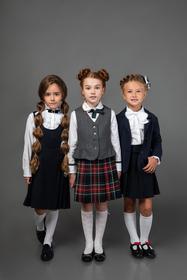Top Rankings
Howard School District 48-3 ranks among the top 20% of public school district in South Dakota for:
Category
Attribute
Overall Rank
Highest overall rank (Top 10%)
Math Proficiency
Highest math proficiency (Top 20%)
Reading/Language Arts Proficiency
Highest reading/language arts proficiency (Top 20%)
For the 2025-26 school year, there are 3 public elementary schools serving 230 students in Howard School District 48-3. This district's average elementary testing ranking is 9/10, which is in the top 20% of public elementary schools in South Dakota.
Public Elementary Schools in Howard School District 48-3 have an average math proficiency score of 61% (versus the South Dakota public elementary school average of 43%), and reading proficiency score of 61% (versus the 49% statewide average).
Minority enrollment is 4% of the student body (majority Hispanic), which is less than the South Dakota public elementary school average of 36% (majority American Indian).
Overview
This School District
This State (SD)
# Schools
4 Schools
495 Schools
# Students
328 Students
100,764 Students
# Teachers
26 Teachers
7,485 Teachers
Student-Teacher Ratio
13:1
13:1
Student By Grade
District Rank
Howard School District 48-3, which is ranked within the top 10% of all 146 school districts in South Dakota (based off of combined math and reading proficiency testing data) for the 2022-2023 school year.
The school district's graduation rate of 80% has stayed relatively flat over five school years.
Overall District Rank
#13 out of 148 school districts
(Top 10%)
(Top 10%)
Math Test Scores (% Proficient)
62%
42%
Reading/Language Arts Test Scores (% Proficient)
64%
51%
Science Test Scores (% Proficient)
45-49%
42%
Graduation Rate
(21-22)≥80%
82%
Students by Ethnicity:
Diversity Score
0.07
0.55
% American Indian
1%
17%
% Asian
n/a
2%
% Hispanic
3%
8%
% Black
n/a
3%
% White
96%
64%
% Hawaiian
n/a
n/a
% Two or more races
n/a
6%
All Ethnic Groups
District Revenue and Spending
The revenue/student of $18,021 is higher than the state median of $13,146. The school district revenue/student has stayed relatively flat over four school years.
The school district's spending/student of $15,625 is higher than the state median of $12,647. The school district spending/student has stayed relatively flat over four school years.
Total Revenue
$6 MM
$1,916 MM
Spending
$5 MM
$1,844 MM
Revenue / Student
$18,021
$13,146
Spending / Student
$15,625
$12,647
Best Howard School District 48-3 Public Elementary Schools (2025-26)
School
(Math and Reading Proficiency)
(Math and Reading Proficiency)
Location
Quick Facts
Rank: #11.
Howard Jr. High - 05
(Math: 60-64% | Reading: 60-69%)
Rank:
Rank:
9/
Top 20%10
500 N Section Line
Howard, SD 57349
(605) 772-5515
Howard, SD 57349
(605) 772-5515
Gr: 6-8 | 70 students Student-teacher ratio: 18:1 Minority enrollment: 6%
Rank: #22.
Howard Elementary - 02
(Math: 60-69% | Reading: 60-64%)
Rank:
Rank:
9/
Top 20%10
201 N Minnie St
Howard, SD 57349
(605) 772-4443
Howard, SD 57349
(605) 772-4443
Gr: K-5 | 131 students Student-teacher ratio: 12:1 Minority enrollment: 4%
Rank: #33.
Shannon Colony Elementary - 08
(Math: 40-59% | Reading: 40-59%)
Rank:
Rank:
4/
Bottom 50%10
43945 235th St.
Winfred, SD 57076
(605) 772-4443
Winfred, SD 57076
(605) 772-4443
Gr: K-8 | 29 students Student-teacher ratio: 15:1
Recent Articles

School Vouchers: Updated Pros and Cons (2025 Review)
Comprehensive 2025 analysis of school vouchers, weighing benefits and challenges for families, funding, outcomes, and policy directions.

Benefits and Drawbacks of Homework in 2025
Explore updated 2025 insights on homework’s benefits, drawbacks, mental health impact, best practices, and policy trends in U.S. public schools.

Charter Schools vs Public Schools 2025: Key Differences & Trends
Explore updated 2025 insights comparing charter schools vs public schools, enrollment, academic outcomes, funding, and real-world examples for families and educators.





